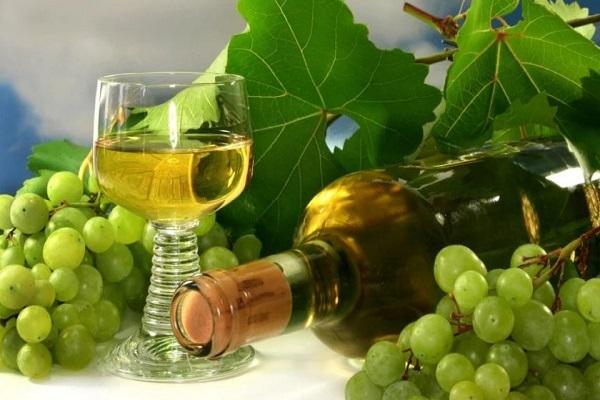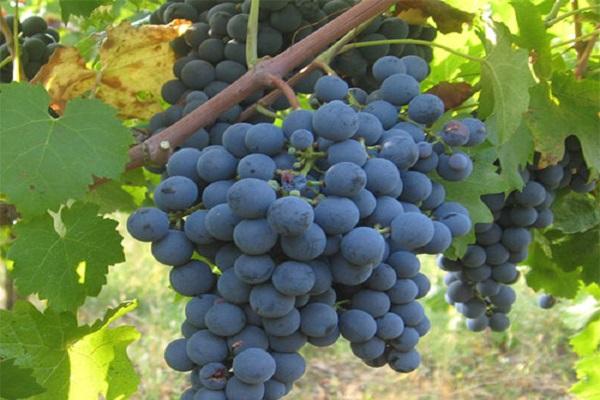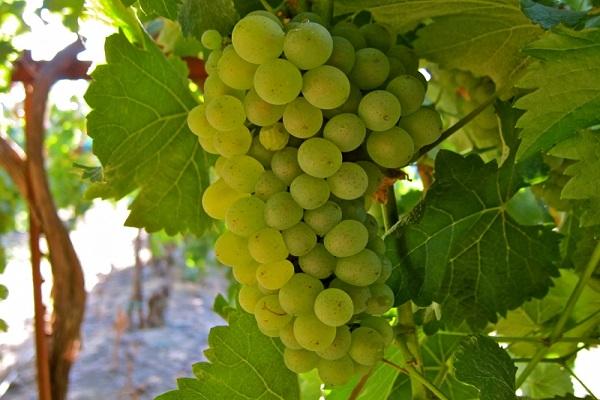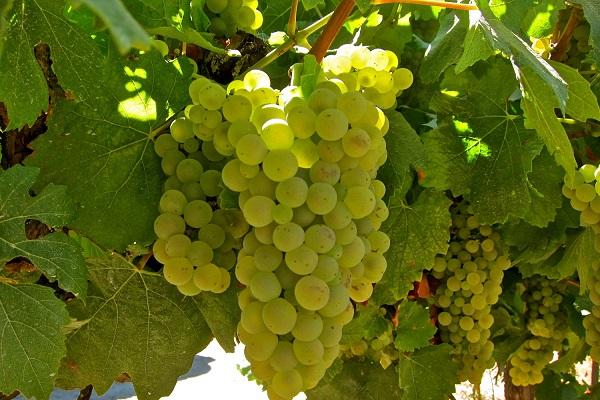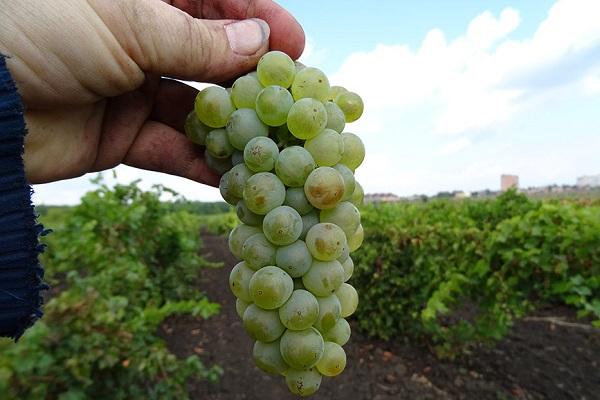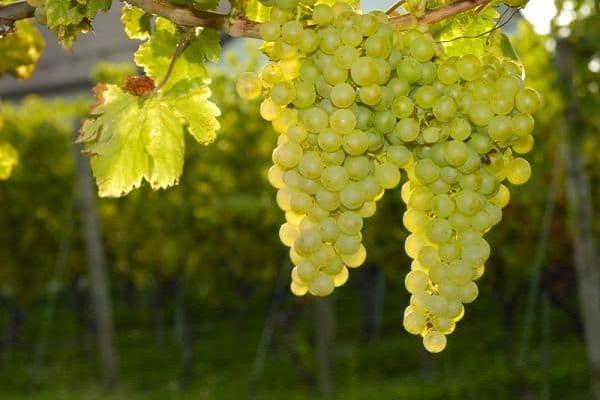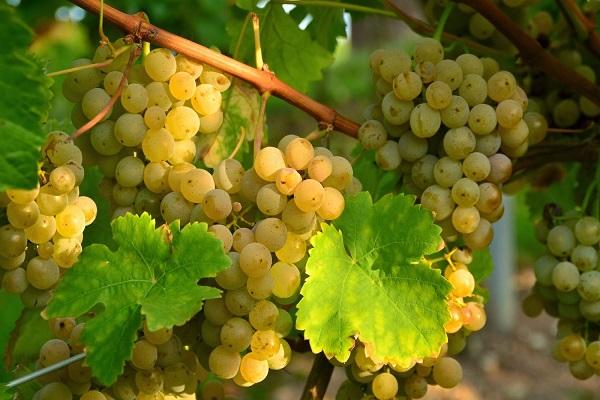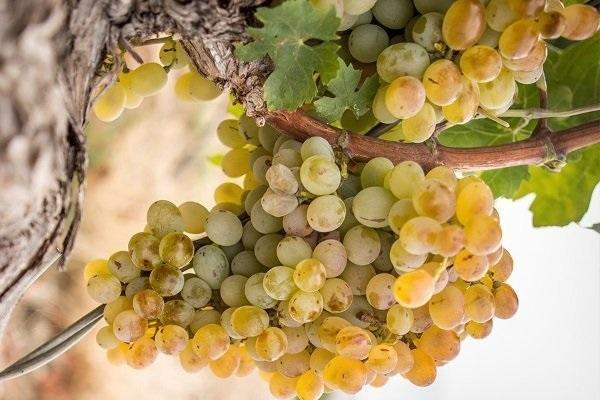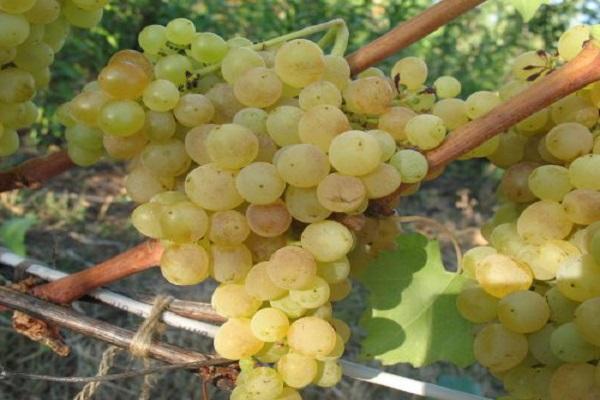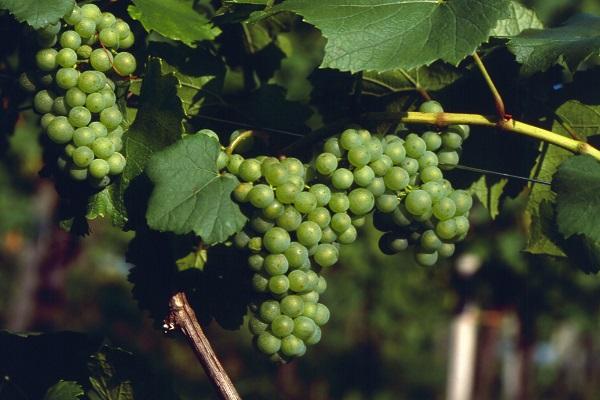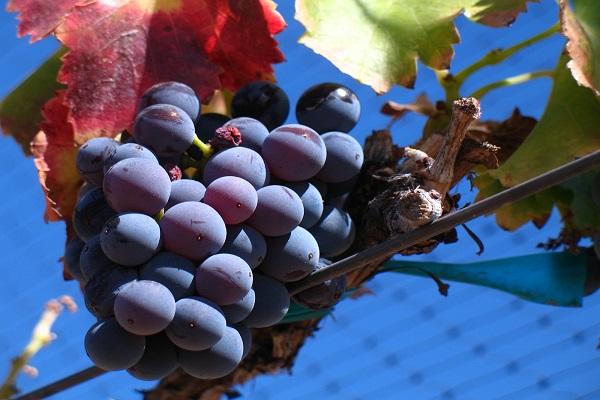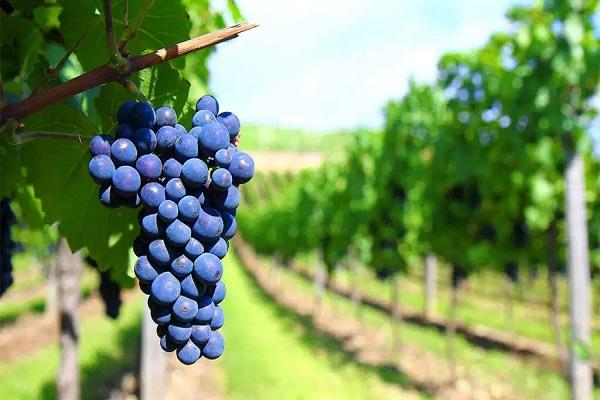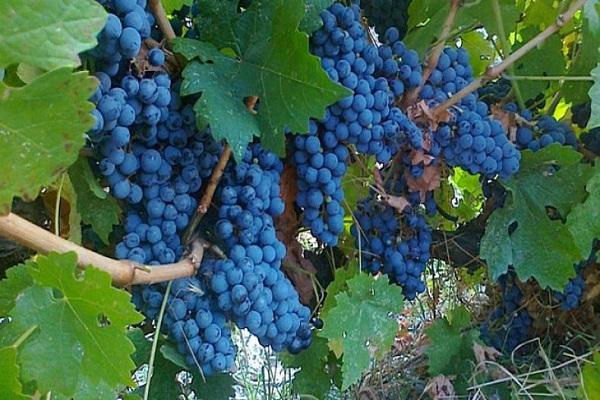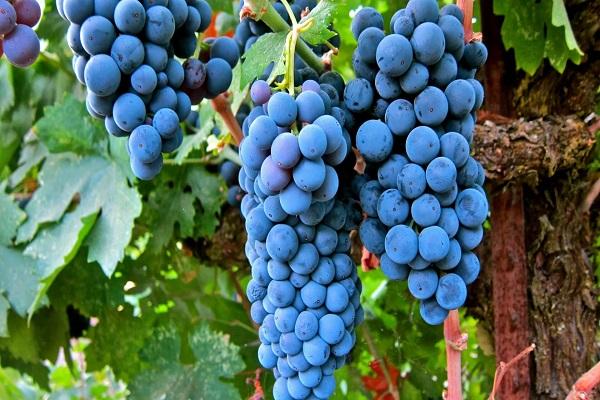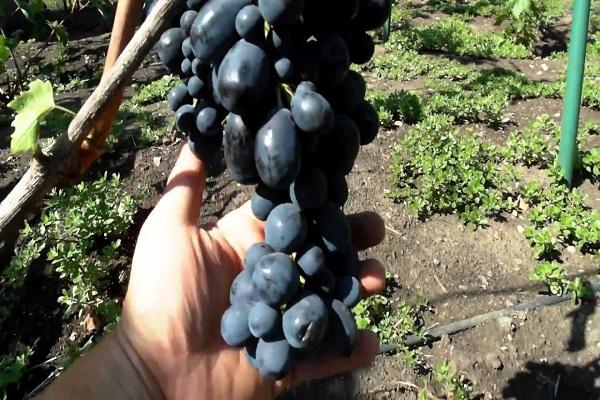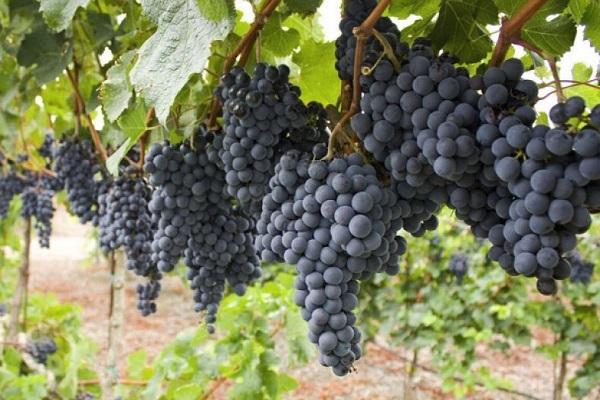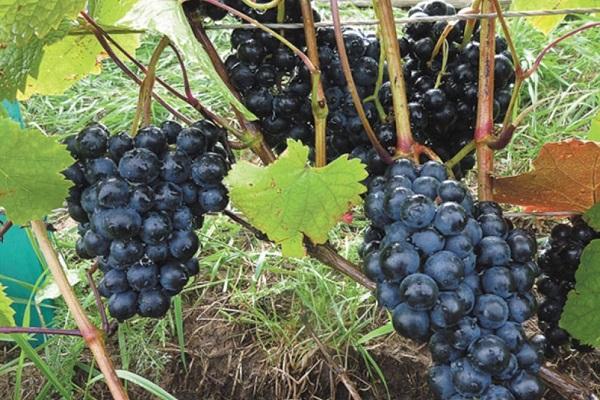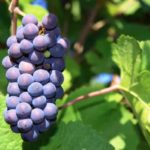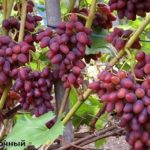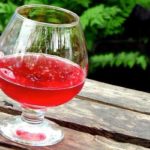To create high-quality homemade wine from grapes, it is recommended to use special varieties for wine purposes. Each variety is unique; the grapes differ in the amount of natural sugars, juiciness, and astringency of the skin. Grapes must be processed into wine manually; there is no need to wash the berries or remove the skins. Let's look at the most popular wine varieties of red and white grapes used in home winemaking.
- Features of technical varieties
- What are the differences between wine grape varieties?
- What grape varieties are white wine made from?
- Pinot Blanc
- Chardonnay
- Riesling
- Biyanka
- Sauvignon Blanc
- Muscat white
- Aligote
- Viura (Maccabeo)
- Chasselas white
- Grillo
- Friendship
- Crystal
- Traminer white
- Which grape makes the best red wine?
- Grenache Noir
- Pinot Noir
- Mourvedre (Mourvedre Noir)
- Saperavi
- Carménère
- Cabernet Sauvignon
- Syrah (Shiraz)
- Merlot
- Sangiovese
- Richelieu
- Bobal
- Isabel
- Malbec
- Festival
- Marquette
- Dobrynya
- Augusta
- Odessa black
Features of technical varieties
The vine of technical grape varieties can withstand frosty winters (up to -40 0C), is easy to care for and is resistant to fungal and bacterial infections.
Breeders have bred a large number of universal species suitable for wine production and fresh consumption of berries.
A huge role in the final taste of grapes is played by:
- The composition of the soil where the vine is grown.
- Amount of precipitation.
- Influence of direct sunlight.
- Vine care and grape growing conditions.
On a note! The berries of technical grape varieties contain a large amount of sugars and juice; the fruits have a pronounced aroma, which creates the basis for the taste of the future wine.
What are the differences between wine grape varieties?
Wine grape varieties are used mainly for the preparation of wine, cognac, brandy and other alcoholic beverages. There are early, late, muscat, sweet and table grapevine varieties.
To produce elite wines, time-tested grape varieties and hybrids are used.
The berries of wine varieties are usually small in size, distinguished by their discreet appearance and thick skin. At the same time, ripe berries contain a large amount of juice and sugar.
What grape varieties are white wine made from?
The technique for making white wine differs from the classic technology for making red wine.
To get white wine? it is necessary to use wine materials directly from white varieties and types of grapes and know their characteristics. The selection of such species is enormous; the vines for cultivation are selected that are suitable for the natural and climatic conditions of the region where the vineyard is planned to be planted. Let's look at the popular and main varieties of white vine and the names of the varieties.
Pinot Blanc
A white grape variety with an exquisite multifaceted bouquet. Suitable for making champagne and sweet dessert wines. The homeland of the fragrant vine is Burgundy.
The taste of Pinot Blanc wine has pronounced apple notes, with a slight almond tint. Inexperienced winemakers may confuse Pinot Blanc with Chardonnay. Pinot Blanc is called still wine. This wine grape has gained particular popularity in the USA, Argentina, and Canada.
Chardonnay
Chardonnay grapes are technical types and are not used fresh for food. Chardonnay clusters are an excellent universal wine material for sparkling, dry and sweet white wines. The homeland of the vine is Burgundy.
Feature of the species: if the grapes are grown in regions with a cool climate, the wine will acquire a light nutty-lemon taste, if the vine was cultivated in the south and received a lot of sunlight, the wine will be dense, with a pronounced honey-fruit taste.
The vine is unpretentious, but does not have a high yield; it is one of the most ancient varieties of wine grapes.
Riesling
A German favorite for making white wines. Riesling is self-sufficient, the taste characteristics are unique, the vine ripens for a long time, feeds on the warm rays of autumn sun, and is grown in the northern regions of Europe.
The bouquet of Riesling deserves special attention: floral notes open up and then turn into herbal notes (the aroma of freshly cut grass). If Riesling is aged, it has so-called “petroleum notes” - the smell of rubber, kerosene, tar, which is especially appreciated by winemakers around the world. Riesling is not popular in Russia; inexperienced winemakers often consider it too “sour.”
Biyanka
Unpretentious grapes originally from Hungary. Suitable for growing regions with warm southern climates. Biyanki wine materials produce excellent cognac and delicious dry white wine. Cognac has a pronounced almond flavor with delicate notes of vanilla. In Russia, spiced vodka is made from Biyanka.
It is characterized by stable yield and high level of productivity.
Sauvignon Blanc
French white grapes. A distinctive feature of Sauvignon Blanc berries is the white waxy coating that forms on the fruit at the time of full ripeness. The wine of this variety is tasty, characterized by minerality and pronounced “smoky” tones and the smell of gunpowder. Sauvignon Blanc is often infused in oak containers with the addition of other wine grape varieties.
Muscat white
Belongs to the nutmeg group for table use with early fruiting. Refers to the capricious, whimsical species. White Muscat wine is light, with pronounced citrus notes and the aroma of white rose.
It is recommended to grow the capricious vine on southern slopes; potassium fertilizing is required.
Aligote
Burgundy variety of early ripening. The vine is resistant to frost; vineyards are planted in the northern regions. Basically, dry wines are prepared from Aligote. The wine has high acidity and a pronounced floral aroma.
It is not recommended to age Aligote in a barrel; there are technologies for making red wine of the Aligote variety.
Viura (Maccabeo)
Spanish white grapes. Dry and sweet white wines are made from Viura clusters. It has a high, stable yield and can be aged in barrels. The taste of the finished product is dense, floral, with nutty notes. In general, the taste of Viura is neutral; grapes are often included in blends.
Chasselas white
An unpretentious species, resistant to fungal diseases, capable of growing and bearing fruit in regions with different climates. Refers to table hybrids. The variety's homeland is France. The wine has a neutral taste.
Grillo
An autochthonous variety of Sicilian grapes. A distinctive feature is the high sugar content. Italians have traditionally used Grillo wine materials to make fortified wines with complex aromas.
Dry white wines based on Grillo have bright flavors of citrus, nettle and green pepper. Sparkling wines are also produced from grapes of this Italian variety.
Friendship
Belongs to the Bulgarian-Russian selection. The Druzhba grape is adapted to the natural and climatic conditions of Russia, is unpretentious in cultivation, and is characterized by high, stable yields.
Ripe grapes are suitable for fresh consumption. Druzhba is used successfully in winemaking; the finished wine has a muscat taste, and ripe berries contain a large amount of sugars.
Crystal
A popular type of domestic selection in Russia for universal purposes. Fruits in temperate climates, the pulp is juicy, sweet, with a bright nutmeg aroma. Winemakers value Crystal for its noble and balanced combination of acidity and sugar content.
Traminer white
An Austrian vine that has successfully taken root in Russia. Belongs to the group of muscat grape varieties. The taste of wine based on Traminer is distinguished by a rich, individual, pronounced taste of apricot, rose, violet and peony, with notes of saffron and honey.
The color of the finished product is bright yellow, rich, with a golden tint.
Which grape makes the best red wine?
Red wine is produced from dark grape varieties; there are technologies for distilling red wine from white varieties. Let's look at the most popular types of grapes loved by winemakers that are suitable for making dry red wine.
Grenache Noir
The flagship dark grape variety in Spain. Created on the basis of Grenache Noir, the wine has a rich raspberry flavor with notes of herbs. Rose wines are produced based on this variety.
In some countries, homemade port wine is made from Grenache Noir. Grenache Noir is drought-resistant, highly resilient, and suitable for growing in regions with arid climates.
Pinot Noir
Burgundy grape, common in wine cultures around the world. It is believed that getting a decent quality wine based on Pinot Noir is not so easy, but if the winemaker succeeds, the result will surprise even the most experienced tasters. The flavor palette of Pinot Noir is multifaceted: from candy aromas to the deepest and most delicious notes of the best wines on the planet, fresh notes of strawberry are combined with the aroma of violets and cherries.
Mourvedre (Mourvedre Noir)
Spanish red grapes. A distinctive feature of wine from Mourvèdre is its color: a rich blackberry-burgundy hue and a dense structure of the wine. It belongs to the technical varieties; in Russia it is grown in the Crimea.The vine is characterized by vigorous growth and poor resistance to fungal diseases.
Saperavi
Georgian red grape variety. Refers to varieties of universal use. The acidity of the berries is high, while there is an optimal balance with sugar content. A distinctive feature of the variety is the presence of a coloring pigment in the berries. After drinking this wine, purple stains remain on the lips.
Carménère
Favorite variety of Chilean winemakers. Requires a long summer and warm autumn to achieve full ripeness of the berries, in addition, the vine is prone to thickening and falling off of young berries. The taste of Carménère wine is similar to Merlot with a meaty bouquet and a light cedar aroma.
Cabernet Sauvignon
Cabernet Sauvignon comes from France. The berries are large, round, blue with a waxy coating. A distinctive feature is the smell of nightshade, which ripens the grapes and remains in the resulting wine.
Cabernet Sauvignon is a late-ripening variety, characterized by persistent immunity to fungal diseases and resistance to cracking. Forms a strong vine and is resistant to berry drop.
Syrah (Shiraz)
The oldest variety of French grapes. Suitable for cultivation only in warm southern regions. The wine has a rich dark purple color. The aroma is bright, spicy, with notes of dark chocolate and black pepper.
Syrah fruits are large, round, almost black in color. The vine is formed weak, the grapes are prone to falling.
Merlot
The most popular technical variety for French winemakers. In Russia it is grown in the Krasnodar Territory and Crimea. Not suitable for fresh consumption. The berries are round, blue, with a dense skin and a white waxy coating.
The vine is vigorous, leafy, and the yield is stable.The taste of the wine is light, balanced, delicate, fresh, with the aroma of blackberries, coffee and chocolate. The taste characteristics of the finished product vary and are determined by the region where the vine grew.
Sangiovese
Italian red grapes. Sangiovese wine is characterized by tannin and high acidity. The flavor range is a combination of the aroma of cherries, freshly cut grass and almonds. The variety has many duplicates, but they differ in later ripening periods.
In general, Sangiovese is a rather capricious variety, susceptible to fungal infections.
Richelieu
A hybrid of table grapes of Russian selection, obtained on the basis of Moldavian varieties. It has poor frost resistance, so it is grown in our country only in the southern regions.
The vine is highly productive, the fruits serve as a good basis for creating homemade wine. The berries are large, blue-violet in color with a faint waxy coating.
Bobal
Red unpretentious grape of Spanish origin. Dry and table red wines are produced from Bobal wine materials. The acidity is high, the berries contain a coloring pigment that turns the lips black. The finished wine product has a juicy, fresh taste. Some winemakers age their wine in barrels.
Isabel
The favorite variety of Russian winemakers of American selection. Isabella is unpretentious and easily tolerates heat and frost. The peculiarity of the berries is the slimy pulp, which is capable of popping out entirely, in the shape of a ball, when pressing on the fruit. The taste of the wine is berry, with notes of strawberry.
Malbec
A French red grape variety that has achieved particular popularity in Argentina.Malbec is used to make wines aged in oak barrels. The wine is distinguished by tannin, density and even a certain roughness in taste. Argentine Malbec has notes of violet and plum.
Festival
Belongs to the Russian selection of species with early ripening. Refers to wine types. It is not afraid of sub-zero winter temperatures and has strong immunity to grape infectious diseases. Recommended for home winemaking. The fruit pulp is juicy, tender, with a pleasant grape aroma.
Marquette
Belongs to American selection and is successfully grown in Russia. The ancestor is Pinot Noir. The bush is frost-resistant, the vine is grown in regions with the harsh climate of the northern regions, and belongs to the technical varieties.
Dobrynya
A popular Russian grape variety with early ripening. The fruits of Dobrynya are juicy and sugary. Dobrynya is characterized by high productivity, suitable for cultivation in the northern regions and home winemaking. Juice is also prepared from the fruits.
Augusta
A frost-resistant grape variety recommended for cultivation in our country. Persistent immunity to fungal diseases is combined with high productivity and ease of cultivation.
Odessa black
The second name is Aliberne. Belongs to Ukrainian grape selection. In Russia, it is grown in warm climates, in the southern coastal regions, and is based on the Cabernet Sauvignon vine. Aliberne is productive and belongs to the wine variety. Wine from Odessa black has a tart thorny taste combined with notes of nightshade aroma. The color of the finished product is bright ruby.

